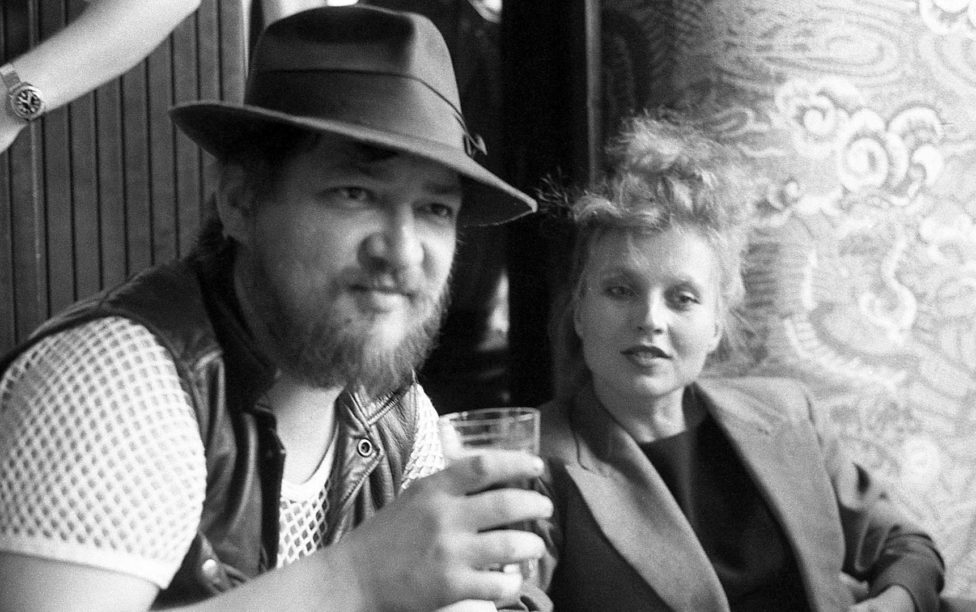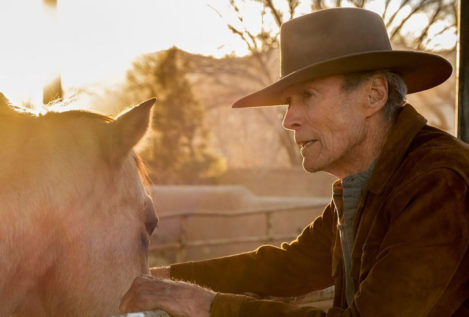Multiplying Movies
«The film medium benefits by a heterogeneity that allows it to record and create in equal measure, to put its money on realism or to cultivate fantasy, to move the camera or to keep it still»

Wikimedia Commons
Although new films are released continually throughout the season, autumn has always been a favourable time of year for the film buff: the fruits of the latest Cannes Film Festival reach viewers when the nights begin to be chilly, so that the cozy feeling of being inside a theatre —however far from the splendour of yesteryear— becomes even more appealing. For better or worse, blockbusters are for the summer. And so billboards in the big cities begin to feature new titles, some of which were held back during the pandemic out of the distributors’ fear that they would fail at the box office. It’s an understandable fear: if it won´t bring in money, cinema is not made. In any case the effect of this backlog is a stimulating variety that goes from thesis films (Titane) to twilight elegy (Cry Macho), or from blasphemous provocation (Benedetta) and science fiction with an auteurial stamp (Dune), to an exploration of reality through fiction (Who’s Stopping Us?, Bergman’s Island). And we’re only talking about October!
But there’s more, of course. The true magnitude of cinema production at a global level can only be perceived with the help of festivals and platforms; lately, in fact, platforms have become the usual headquarters for festivals. It is then that you see very clearly that the viewer needs some sort of filter which would allow him or her to discriminate among such a profusion of titles; there simply isn’t enough time for everything and still less time if one also wishes to get into the history of film. For the rest, the spirit of our time with its catalogue of concerns and its ideological fashions is perceptible in almost all of the new releases; it is a subtle form of tyranny that leads to the ruin of those, above all, who try to bow to it. Although there is always the unknown of how the most engaged authors will tackle the challenge of bringing the themes of their time to the big screen: The Assistant is not the same as Promising Young Woman. Sometimes, on the other hand, the similarities are what attract our attention: Elie Wajeman’s Night Doctor recalls those ironic Good Times by the Safdie Borthers, even if day first breaks in Paris and then again in New York.
Faced, in sum, with the heterogeneity of film production , it is perhaps hard to avoid developing some inclinations instead of others: there are movies that we especially like, styles that strike us as more attractive than others, themes or characters with whom we maintain a close relation. It is not even unusual for a viewer to specialise in certain genres; there are experts in horror film who would never sit down to a melodrama and those whose nostalgia for musicals makes them leery of zombies. There are also those who only watch classical cinema and those who never get beyond the present day; the former think that the cinema has deteriorated beyond repair and the latter don’t feel any particular interest in a past offered them in black and white. There are healthier degrees of attachment: the lover of the contemporary scene who will happily go back as far as the 60s or 70s and the classical buff who will drop into movie theatres once in a while in search of a glint of light from the past that illuminates the present. But the firmer our tastes are, the less open we are to whatever does not fit into the concept of film we have made our own; the prison of expectations will then be of our own making.
It does not follow from this that we have to give up forming our own taste, among other things because this is a natural process when one begins to take a hobby seriously: preferences emerge spontaneously in the course of our private viewing history. Leaving aside the incidental effect our mood or state of mind might have, we reveal those preferences when it comes to deciding what film to watch on any given night. Renoir or Godard? A western from the 50s or a neo-noir from the 90s? Suzuki or Ozu? Spielberg or Béla Tarr? It becomes immediately apparent that often, in reality, there is no need to choose: today Renoir, tomorrow Godard. And even if we would spare The Rules of the Game before we would The Little Soldier if one of them were bound to be thrown into the bonfire, there seems to be no need to make such a choice. To cultivate different forms of excellence in the cinema, which are the expression, after all, of different concepts of what the cinema is or ought to be, starts to look like the best way to go for the cinema buff.
Naturally, the conflict arising from different concepts of cinema is in itself a lasting source of dynamism. Movements and individual creators try to make their way in this world by posing new ways to do things, often concealing their debts or being unfair to their predecessors: remember Truffaut’s famous broadside against “Daddy’s cinema” when he tried to break the Nouvelle Vague in the 60s. Decking yourself out with a trailblazing image is a way to legitimise your own style and to attract the attention of moviegoers. But nothing compels us to choose only one idea of cinema over and above all the rest; just as a preference for one genre or one director does not imply rejecting all of those who are opposed to them, even if practicing a dogmatic narcissism when arguing with your friends can be amusing.
Ich will nicht nur, dass ihr mich liebt, an excellent documentary, released in 1992, about the German director Rainer W. Fassbinder, gathers statements from his closest collaborators and plenty of interesting archival material from the first years of activity of the indomitable leader of New German cinema. In 1969 Fassbinder had brought out Katzelmacher, his third full-length film and the third to appear in that same year. With its characteristically long, static shots, the film made a considerable impression, not devoid of wonder: why leave the camera immobile for such long tracts? When asked by a reporter whether his apparently sketchy approach did not mean that he was failing to take advantage of the formal resources that the camera offered, Fassbinder denied the major assumption in the charge:
“The technical psssibilities offered by the camera only destroy a simple dramatic plot for the film and ruin its clarity. If I zoom into the scene too often or use those extreme close-ups which Italians are so fond of, or if I change the focus a lot or move the camera very much, it is no longer a film.”
It’s not clear how much of this stance is conviction and how much necessity; Dietrich Lohmann, Fassbinder’s first cameraman, appears in the same documentary, saying that they did not have the money to do anything else. In fact, the German director himself will go against this initial idea in the films he made in the 70s, which come close to melodrama. Maybe it’s just that Fassbinder’s way of looking at things changed. But one must emphasise the non-negotiable nature of his judgement (youth will have its say): if I move the camera much it is no longer a film. If we took this declaration to the letter, one would have to conclude that such illustrious creators as Welles, Ophuls, Sirk or Mizoguchi do not make films but rather something else which we are hard put to define. It has already been said that to defend what one does as the only thing that can be done is a strategy for legitimation or, in a lesser key, justification. From the point of view of the audience, however, accepting that premise only leads to aesthetic poverty: why not accept that good movies can be made in many different ways? And the same goes for bad ones: the range of possibilities is equally plural.
One of the theorists of cinema who best tackled the problem is V.F. Perkins, a British critic who was one of the founders of the journal Movie in 1962 and one of the first to argue for the value of the work Hitchcock had done, when it was said that he was merely a talented entertainer. Surely Perkins’s most solid contribution to film theory is Film as Film, a monograph that appeared in 1972, in which the author makes the case for evaluating the worth of individual works by taking into account the author’s intention, as well as his talent in using different formal combinations, rather than caving in to critics’ or viewers’ prejudices. For Perkins, the theoretical debate is irreparably impoverished when posed in terms of a dilemma that forces one to choose between two options, instead of accepting the potential and simultaneous validity of both. In his view, the cinema is an art that is characteristically of an “inherent impurity.” And that should be enough to make us abandon the idea of a “pure cinema” endowed with an identifiable “essence.” Neither the formalists nor the realists are entirely right: the film medium benefits by a heterogeneity that allows it to record and create in equal measure, to put its money on realism or to cultivate fantasy, to move the camera or to keep it still. To consider only this last alternative, the camera that moves sumptuously to the rhythm of Gato Barbieri’s saxophone in The Last Tango in Paris is not any wiser than the camera that sits so stubbornly still as it portrays the losers in Strangers in Paradise beneath the chords of John Lurie’s ethereal soundtrack.
In his day, Perkins was rebelling against the idea that the only legitimate use for the image is based on an expressivity associated with editing: his response is that there is no single way to make movies but, rather, many different ways, whose rightness or wrongness is to be judged on the film’s own terms: there does not exist any intemporal canon to which one must defer. In his view, we cannot focus on any single one of the formal aspects of cinematic creation; it behooves us to consider them in combination and relation to one another. With regard to the preference for editing, he writes:
“If we isolate editing from the entire complex which includes the actors’ movements, production design, camera movement and variations in lighting —which are produced within the different shots as well as between them—, we will not understand any of the elements at work (including the editing), for each one of them gains its value from its relation to the rest.”
That is why we have to pay attention to what it is that a director wished to do, not think about what we would have liked him to do: has he achieved the desired effects with the formal elements he had at his disposal? Perkins maintains that film criticism goes wrong when it tries to impose certain conventions on a film that did not take them into account and which are not applicable to its form. Thus we cannot judge Ford and Rivette in the same way, because they are trying to do different things; this does not mean that they have always done those things well necessarily: if one can strike a key in different ways, there are also many ways to go wrong. Perkins recommends humility on the part of the critic, understanding this to be a willingness to take others’ arguments —formal choices— seriously. The opposite of humility would then be a stubbornly closed mind. And those who think that classic Hollywood cinema is the only one worth caring about are as close-minded as those who turn their backs on everything coming out of Hollywood or who think that everything that was done before 1960 is worthless.
In that sense, and just as occurs in other arts, cinema cannot be judged in “progressive” terms but in relation to the possibilities offered its practitioners in each historical period. If formalists like David Bordwell are able to reflect the nature of aesthetic changes throughout the decades, those formal innovations can be explained in the light of new techniques which expand the range of options available to creators. That is what Paul Schrader did in a memorable series published by the now defunct New York journal Film Comment. But that is not to say that Scorsese’s restless camera is better than the heavy apparatus that limited Sternberg in the 30s. Nor, of course, does it mean that we cannot regret the abuse of zooming in the moviemaking of the 70s. It is simply a matter of integrating the techncial and expressive horizons of each period into our critical judgement.
If we accept these premises, the viewer will have before him or her an extremely wide array of possibilities. They are the possibilities of aesthetic pluralism, the realization of which depends on the viewer’s or critic’s flexibility when it comes to recognizing that there are different ways to do things. A certain parallelism can be drawn with the practice of sports: even if Jordan, Pelé or Federer each represent excellence in their respective fields, the three of them exhibit a limited range of possibilities throughout their career, because each of them has played in his own way, just as Chamberlian, Cruyff or Nadal have done. And we may like Federer better than Nadal, but it is undeniable that both are experts with the tennis racquet and that as spectators we gain if we enjoy them both. The same goes for the cinema: Hawks does things that Mann does not, but there is nothing to keep us from enjoying the maniera of the two. This liberality allows us little by little to discover directors that we may have overlooked, learning to value their virtues instead of rejecting them outright. No rule says that applauding Tarantino requires us to condemn Antonioni. It is hard to maintain this kind of discipline; we often fall prey to to our own inertia, But it’s worthwhile to make the effort: we come out ahead if nothing —or almost nothing— is foreign to us. And we’re still only in October.


